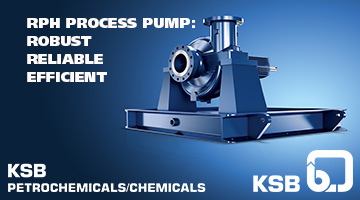In an article in the local manufacturing feature of this issue, Amith Singh, National Manager of Manufacturing for Nedbank Commercial Banking, argues that, despite the pressures, manufacturing remains one of the most powerful levers we have to stimulate growth, to reindustrialise South Africa’s economy, and to position the country for long-term resilience. With the right interventions, he says, the sector can become the driving force behind South Africa’s recovery.
Click to download and read pdf
 Since the early 1990s, GDP contributions from the manufacturing sector have declined from a peak of 23% to just 13.2% by 2021, writes Singh, adding that in the six months before April 2025, year-on-year manufacturing output decreased by a total of 6.3%, the steepest decline in over a year. Not due to a lack of capability or talent, though, but underinvestment, outdated infrastructure, rising production costs, unreliable energy, and a complex regulatory environment. The result has been shrinking competitiveness and investor hesitancy.
Since the early 1990s, GDP contributions from the manufacturing sector have declined from a peak of 23% to just 13.2% by 2021, writes Singh, adding that in the six months before April 2025, year-on-year manufacturing output decreased by a total of 6.3%, the steepest decline in over a year. Not due to a lack of capability or talent, though, but underinvestment, outdated infrastructure, rising production costs, unreliable energy, and a complex regulatory environment. The result has been shrinking competitiveness and investor hesitancy.
PwC’s South Africa Manufacturing Analysis 2024, published in October last year, described the South African manufacturing landscape, following a difficult 2023, as resolute, resilient and adaptable. Providing more than 1.6 million jobs and accounting for 13.0% of South Africa’s GDP. “Overall, the South African manufacturing sector holds significant potential for growth and innovation, provided it can navigate the challenges and leverage the opportunities presented by sustainability, digital transformation, and strategic collaboration,” said Pieter Theron. PwC Africa Industrials & Services Leader.
PwC predicted the sector would continue to play a significant role in the economy, with manufacturing’s nominal contribution expected to grow by an average of 5.7% per annum over the next decade.
Nine months down the line, this seems overly optimistic, though.
In this issue, however, there are positive signs. Sandvik Rock Processing’s screen manufacturing facility in Kempton Park is busy. The South African facility is the product designer, IP owner, and product specialist for the SK range of vibrating screens and supports the Australian and Finnish offices with customisations of these. Local customisations of the Australian SM range and Finland’s S-range of screens are now manufactured in Kempton Park, with design support from the overseas specialists.
“Environmental sustainability is a key priority for Sandvik Rock Processing. This is why we place a strong emphasis on regional manufacturing. Expanding local production not only supports community development but also helps minimise environmental impact,” says Riaan Steinmann, EMEA Operations Director for Screening Solutions at Sandvik Rock Processing.
Expansion is also underway at Weir’s Alrode manufacturing facility south of Johannesburg, where a new production facility for the company’s ENDURON® Elite and ENDURON® Orbital screen ranges is being built. This strategic investment, says Weir Comminution Director, JD Singleton, will make this plant a major player in global screen production. “It is also an important step in our journey over the past six years to develop a large format ENDURON® Elite range of screens for the mining market.”
Tru-Trac, the South African company that pioneered and patented self-aligning idlers for conveyor belt systems, is featured in our Innovative Engineering slot in this issue. Tru-Trac solutions have become the globally accepted gold standard for resolving belt misalignment issues on bulk material conveyors. At bauma 2025 in Munich earlier this year, the company showcased several more advanced innovations: for rip detection, weighing accuracy and reliability, self-adjusting belt alignment, and AI-based proactive maintenance.
In our cover story, we highlight the ongoing investment by SEW-EURODRIVE in scaling up its South African operations. Following the completion of
Phase 1 of its expanded operations in 2022, the company is now nearing completion of Phase 2, a massively expanded after-sales servicing, repair, manufacturing and training facility in Aeroton, Johannesburg.
The PwC 2024 analysis notes that digital transformation is reshaping the manufacturing sector, enhancing efficiency, reducing costs and improving product quality. Adopting Industry 4.0 tools and smart factory technologies is driving significant improvements in manufacturing efficiency and sustainability.
There is certainly evidence of this at Sandvik Rock Processing, Weir, Tru-Trac and SEW-EURODRIVE, among others.
Nedbank’s Amith Singh says that South Africa’s manufacturing sector has what it takes: skill, grit and real potential. But unlocking that promise demands urgency and ambition. “At Nedbank Commercial Banking, we believe this is the time to think bigger, to look beyond the challenges and see the opportunity to lead,” he says.
Manufacturing isn’t just a sector; it’s a national asset, he believes. “With the right partnerships, investment, and long-term vision, we can transform it into a powerful engine of inclusive, lasting growth. From energy efficiency to advanced machinery, from the shop floor to the export market, this is where our future is made,” he says.
Perhaps if we take up this battle cry, PwC’s 5.7% growth estimate is achievable.











